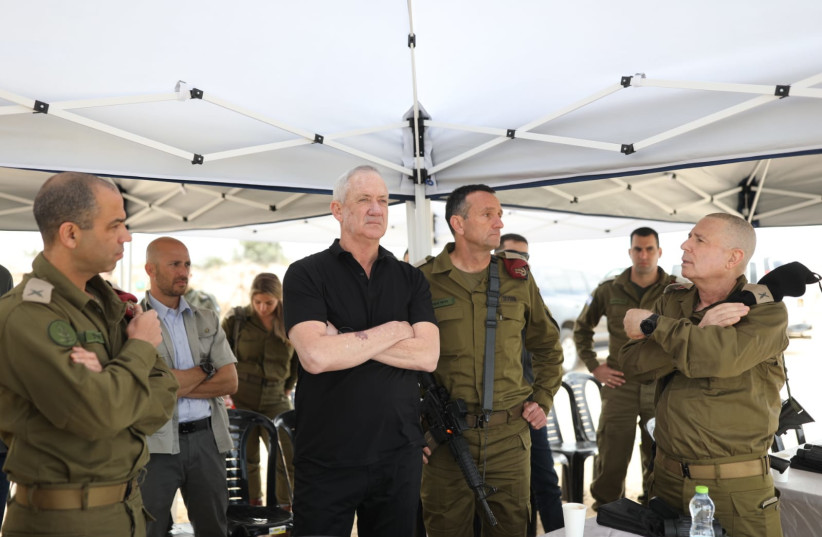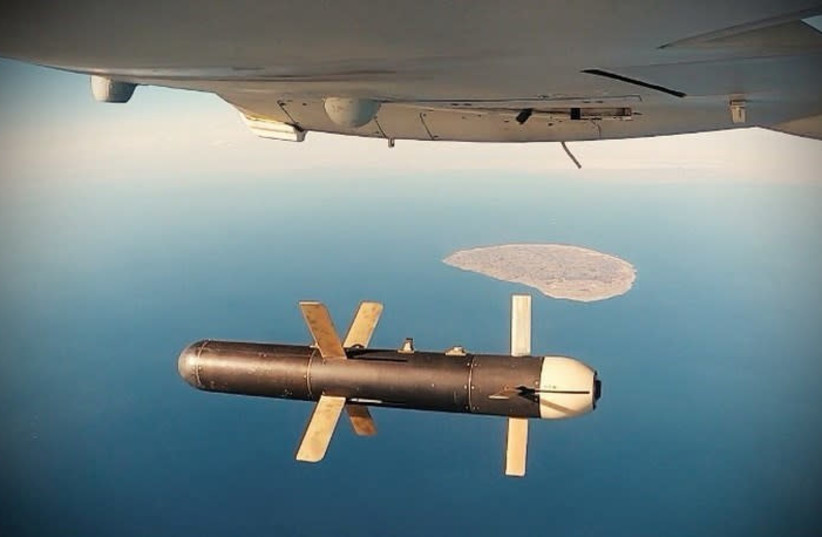Iran is currently trying to complete the production and installation of 1,000 advanced IR6 centrifuges, including at a new underground facility being built near Natanz, Defense Minister Benny Gantz announced on Tuesday.
"Iran continues to accumulate irreversible knowledge and experience in the development, research, production and operation of advanced centrifuges,” Gantz said.
According to the defense minister, Tehran is a few weeks away from accumulating enough fissile material sufficient for one nuclear bomb.
Iran, he said, is preventing access by the International Atomic Energy Agency (IAEA) to its production system. It currently holds 60 kg. of enriched material at 60% and produces metallic uranium at the enrichment level of 20%.
Gantz said that one of the lessons from the war in Ukraine is to “exercise economic, political and, if necessary, military force as early as possible, and perhaps in this way to prevent wars. The same is true of the situation we are in with Iran.”

According to him, the price of a possible war with Iran can be prevented or reduced if there is a “multidimensional” regional and international pressure campaign against the Islamic Republic.
“Today, the prices for tackling the Iranian challenge on the global and regional levels are higher than they were a year ago and lower than they will be within a year,” he warned.

Gantz’s comments come as talks between the United States, Iran and Western powers over Tehran’s nuclear program are at a stalemate. Senior EU official Enrique Mora, who is coordinating the talks traveled to Iran in order to overcome the seven-week deadlock, but Iran is not budging on its demand that the US remove the Islamic Revolutionary Guard Corps from its Foreign Terrorist Organization list.
The IRGC and its Quds Force are the main targets of Israel’s war-between-wars campaign, known in Hebrew as MABAM. Over the years it has carried out thousands of kinetic strikes, in Syria and further from its borders, by land, sea and air as well as cyber-kinetically according to foreign reports, in order to prevent the Iranian regime from reaching its goals of regional hegemony and becoming a nuclear state.
The IRGC is one of eight branches of Iran’s military and, along with its Quds Force, is not only the Islamic Republic’s most feared and advanced military branch, but also a powerful political and economic player that answers directly to Ayatollah Ali Khamenei.
The IDF does not believe that the two sides will reach an agreement and is seriously planning several military options should the talks fail, believes that in addition to sanctions the Americans need to place a true military option on the table as well.
Only then will Iran take the negotiations and Israel seriously.
According to the military, they are in constant contact with the Americans, with the new commander of U.S. Central Command U.S. Army Gen. Michael “Erik” Kurilla making his first visit to Israel Tuesday.
A senior military official told The Jerusalem Post that during his visit, Kurilla will carry out an operational assessment and that Iran will be part of the discussions since the Islamic Republic is the responsibility of CENTCOM.
“We will share with them our assessment about what we see and think,” he said, adding that while the two sides will have an open discussion with frank talks, “but we have constraints on both sides.”
Kurilla is in Israel after visiting other countries in the region. According to the officer, Kurilla is no stranger to the Middle East and is the main American “sensor” in the region.
But, the Americans have not shared their strategy with Israel vis-a-vis military options for Iran.
According to Gantz, the number of strategic weapons such as long-range missiles and drones in the hands of Iranian proxies has increased “significantly” over the past year, including in Syria, Iraq and Yemen.
“It is developing operational platforms throughout the region with accurate capabilities including cruise missiles, surface-to-surface missiles and unmanned aerial vehicles that have a range of thousands of kilometers,” the defense minister said.
Iranian proxies are already using those capabilities provided by the Quds Force to “attack oil reserves, airports and civilian targets,” Gantz said referring to the numerous attacks against Gulf States, Saudi Arabia and American targets in Iraq.
The defense minister also confirmed that the IRGC launched a pair of drones from Iran toward Israel where they were set to explode. The two Shahed-136 drones were shot down in February by American fighter jets close to Erbil in the Kurdistan region of Iraq.

Since Israel began that campaign (known as MABAM in Hebrew) in 2013, it has carried out thousands of strikes in an attempt to thwart Iranian entrenchment and the smuggling of advanced weapons to Hezbollah in Syria and Lebanon. According to foreign reports, it has also carried out strikes in Iraq and Yemen.
“In Syria, too, attempts to transfer and produce precision weapons continue,” Gantz said, warning that “Israel will continue to halt these efforts and prevent harm to its citizens and the region. "
